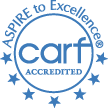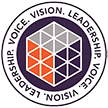Welcome back to our Body talk. So far, we’ve looked at the consequences of long-term substance abuse and important body-oriented considerations in early recovery, and we’ve talked about the body’s role in healing and forward motion in recovery. Today, our focus is on specific body-based activities that can support you in ongoing healing and discovery.
The 3 Whys For Engaging your Body in your Emotional Healing Journey
Before we get into 3 specific activities, let’s talk about the whys a little bit – specifically the whys of working with and through the body for emotional healing. There are 3.
- Emotions happen in your body, and your body reaps the consequences of emotional suppression and the rewards of healthy emotional expression. It’s beneficial to find ways of sensing emotions in your body and processing emotions through physical movement and breath.
- Often, folks who have misused substances for long periods of time and/or have a history of trauma have difficulty identifying and processing emotions. It is possible to access and process emotions physically without naming them. Additionally, learning to sense the physical symptoms of emotions can help you learn to identify them for yourself and express them to others when needed.
- Extended periods of stress – through addiction or trauma – can result in nervous system dysregulation. Learning to regulate your nervous system contributes to healthy decision making, lowers impulsivity, and improves your ability to take value-based action.
3 Body-Based Practices for Emotional Healing and Discovery
As you’ll recall from our last post, somatic interventions like titrating, pendulating, and focused exhalations are more and more common in clinical settings from treatment centers to psychotherapy offices. The body as both victim and healer is gaining understanding and importance in the field of mental health, and the world outside the therapist’s office is also recognizing the key role the body plays in emotional healing. This is great news because it means that there are more of these offerings available to those in need, and those folks who want to help others can find the training to do so. Below, you’ll find 3 body-based practices that employ the physical body in the healing process and that can be useful when used as an adjunct to traditional therapy and counseling.
Holotropic Breathwork®: Holotropic Breathwork® was conceived of and developed by Stanislov Grof (Grof Transpersonal Training 2017-2021). The process, facilitated by trained, certified practitioners involves accelerated breathing combined with evocative music and often includes time for artistic expression and sharing experience. It is often practiced in groups but individual sessions may also be available. This specific style of breathwork is said to have physical, emotional, and spiritual benefits, and it may bring improved self-awareness and positive outlook. According to writers at Healthline.com (medically reviewed 2017), Holotropic Breathwork® may help people struggling with addiction, depression, stress, PTSD, migraines, chronic pain, avoidance behaviors, asthma, and premenstrual tension. It’s a powerful practice, and it’s important to note that Holotropic Breathwork® can bring up intense feelings. It may not be appropriate for everyone. People with cardiovascular issues, severe mental illness, high blood pressure, glaucoma, detached retina, osteoporosis, recent injuries or surgery, seizure disorders, a family history of aneurysms, history of panic attacks, psychosis or similar disturbances, and those taking medications daily should consult with their doctor prior to engaging in this practice. It is also not recommended for pregnant and breastfeeding women (Healthline.com, medically reviewed 2017).
iRest®: Developed by Dr. Richard Miller, a yogic scholar and practitioner and clinical psychologist, iRest® is a full-bodied, modern, meditative practice based on traditional yogic practices and contemporary, Western psychology and neuroscience. Though iRest® is a meditative practice, facilitators engage practitioners’ awareness of physical sensations and sometimes employ movement to assist awareness. iRest® is accessible to all physical bodies and has been acknowledged as an alternative for pain management by the U.S. Army Surgeon General. Further, iRest® has received positive attention as a treatment for PTSD by the Defense Centers for Excellence based on current studies with iRest® in the military (Integrative Restoration Institute, 2021) .
The Nonlinear Movement Method®: The Nonlinear Movement Method® is a somatic practice that was developed by teacher and clinician, Micheala Boehm. The practice is loosely guided by a trained, certified facilitator, and despite being more reliant on physical movement than either iRest® or Holotropic Breathwork®, is accessible to all physical bodies. Practicing on a yoga mat or blanket (or even in a chair or lying in bed), practitioners are invited to track the sensations they are experiencing in their bodies (physical, emotional, and even cognitive) through continued movement. There are two “rules” to the practice – close your eyes, and keep moving, even if that means wiggling a finger. The idea is that continued motion allows the energy of the feeling to keep processing rather than becoming stuck. The benefits of this practice may include nervous system regulation, emotional identification and processing, trauma pattern release, and high bodily responsiveness among others (Boehm, 2021).
These three methods were specifically chosen because facilitators receive extensive training prior to teaching publicly and ongoing support in their work after they leave training, not because they are the only way to employ the body in your ongoing healing and recovery. Trauma-informed yoga practices, Yin Yoga, Rolfing, other styles of breathwork, and conscious movement and dance practices can also be helpful. We encourage you to be curious, to be honest with yourself about your physical and emotional capabilities and needs, to consider the type of training that is required for facilitators, and to talk with your healthcare team about any physical, emotional, or cognitive concerns that you may have.
Recovery from addiction, and ongoing emotional healing and discovery benefit when you take the body along for the ride. We hope that this series has offered you information and inspiration for your ongoing journey.
References
Boehm, M. (2021). The Non-linear Movement Method® About the Method. Retrieved from https://www.thenonlinearmovementmethod.com/the-non-linear-movement-method/ on August 27, 2021.
Grof Transpersonal Training (2017-2021). About Holotropic Breathwork®. Retrieved from http://www.holotropic.com/holotropic-breathwork/about-holotropic-breathwork/ on August 26, 2021.
Healthline (medically reviewed 2017). What is Holotropic Breathwork® and how is it used? Retrieved from https://www.healthline.com/health/holotropic-breathwork on August 27, 2021.
Integrative Restoration Institute (2021). About us. Retrieved from https://www.irest.org/about-irest-institute on August 25, 2021.
Dr. Allaire received his Bachelors of Science in Biology from the University of Houston, as Valedictorian of the College of Natural Sciences and Mathematics, and his Medical Doctorate from Baylor College of Medicine, where he served as Chief Resident. He is the medical monitor for the Physician Counseling Committee of the Harris County Medical Society and the Medical Director of Serenity House Detox. Dr. Allaire specializes in medically assisted detox cases, treating patients in recovery from addiction or other mental health disorders, the medical assessment and monitoring of patients with addictive disorders, medical care related to eating disorders and the medical treatment of patients with mental health conditions.



